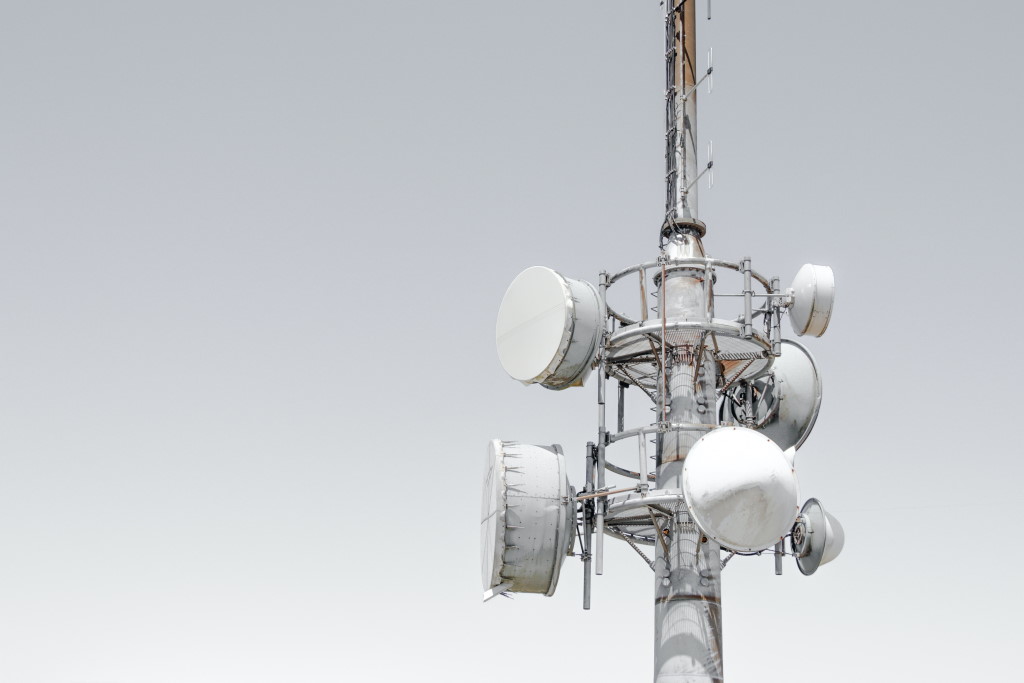Access to 5G networks is now available through a large part of the Edmonton region, allowing municipalities to leverage those connections and remain competitive in a global market increasingly turning to smart technologies.
Major providers like Telus and Rogers began connecting 5G infrastructure this summer and fall, beginning with Edmonton’s downtown core and recently expanding into surrounding municipalities like St. Albert, Leduc, and parts of Parkland County.
The fifth generation of broadband cellular networks promises faster connection speeds, up to 10 times faster than 4G LTE, with a higher capacity for connected devices.
Accessing that kind of connectivity is crucial to attracting and expanding investment in the region, according to Edmonton Global’s vice-president of strategy and innovation, Lynette Tremblay.
“Broadband is critically important for a basic level of access across communities, but 5G is that next generation of connectivity, speed, access reliability, and it just takes it to a completely different level,” she says.
Tremblay says establishing the region as a 5G leader would set it apart from other jurisdictions in Canada for investment as companies develop strategies for Industry 4.0, the “Fourth Industrial Revolution” that leverages automation and data exchange in manufacturing and industries.
“I think it’s all about future-proofing our economy,” says Edmonton Councillor Michael Walters, who has voiced his support for 5G exploration at council.
“(Albertans) have talked a lot about the viability and the success of our oil and gas industry as our primary economic driver,” he says. “But preparing for a different kind of world, where we’re going to have a different kind of economy, is even more important to me.”
Walters says innovation and technology can also be leveraged to help with the city’s corporate objectives: public engagement and safety, transportation, and developing resilience to climate change. He uses the example of 5G-enabled sensors monitoring temperature data in the river valley to respond to any potential fire hazards.
“5G offers the kind of speed and access to big data that really helps us make better decisions,” Walters says.

Photo by Tony Stoddard on Unsplash
The speed and low latency of 5G is being touted as an important enabler of the Internet of Things, a term used when talking about objects with sensors that can connect people and environments in ways that weren’t possible until recent years.
Areas that could capitalize on the possibilities of 5G exist throughout the region, Tremblay says.
The city’s burgeoning technology sector can use 5G to develop machine learning and artificial intelligence that other companies can use for their operations. The Edmonton International Airport in Leduc County and the Villeneuve Airport in Sturgeon County could use the technology for its day-to-day operations and as a hub for innovation testing happening in aerospace, defence, and autonomous systems.
In more rural areas, Tremblay says 5G also enables crop and soil management and autonomous vehicles used in precision agriculture.
“It really does go beyond the downtown core of the city, and it’s relevant to the entire region and every sector,” she explains.
Mayor Gale Katchur says access to 5G is also important for the mid-size city of Fort Saskatchewan, the gateway to Alberta’s Industrial Heartland. Light and medium scale industries can tap into that connectivity while operations centres in the energy sector can better monitor pipelines.
“With wireless communications and technology advancements, it’s really important that we are connected to the rest of the region and to Canada,” says Katchur.
In Stony Plain, where many residents commute to Edmonton for work, Mayor William Choy says 5G is another tool for telecommunication that has proven crucial during COVID-19.
“It just adds a little extra service and speed for our customers and residents that allow them to be more connected to the community and be able to provide work from home,” he says.
But 5G is only one part of a larger digital infrastructure. Karen Wichuk, chief executive officer of the Edmonton Metropolitan Regional Board, says it is working alongside Edmonton Global and the Edmonton Chamber of Commerce to advance broadband as a critical utility.
“We also have to think about what is at the foundation of some of this, and that it’s ensuring that we think about connectivity and the capacity, specifically, at the heart of that broadband as a utility,” she says.
“That’s some of the work that we’re doing.”
Broadband speeds vary throughout the region, making some areas more competitive for businesses than others. A broadband situation report released in August recommends creating a regional strategy for how it should be developed in the future.
The report found that improving broadband connectivity across the region could increase GDP by up to $1 billion per year.
